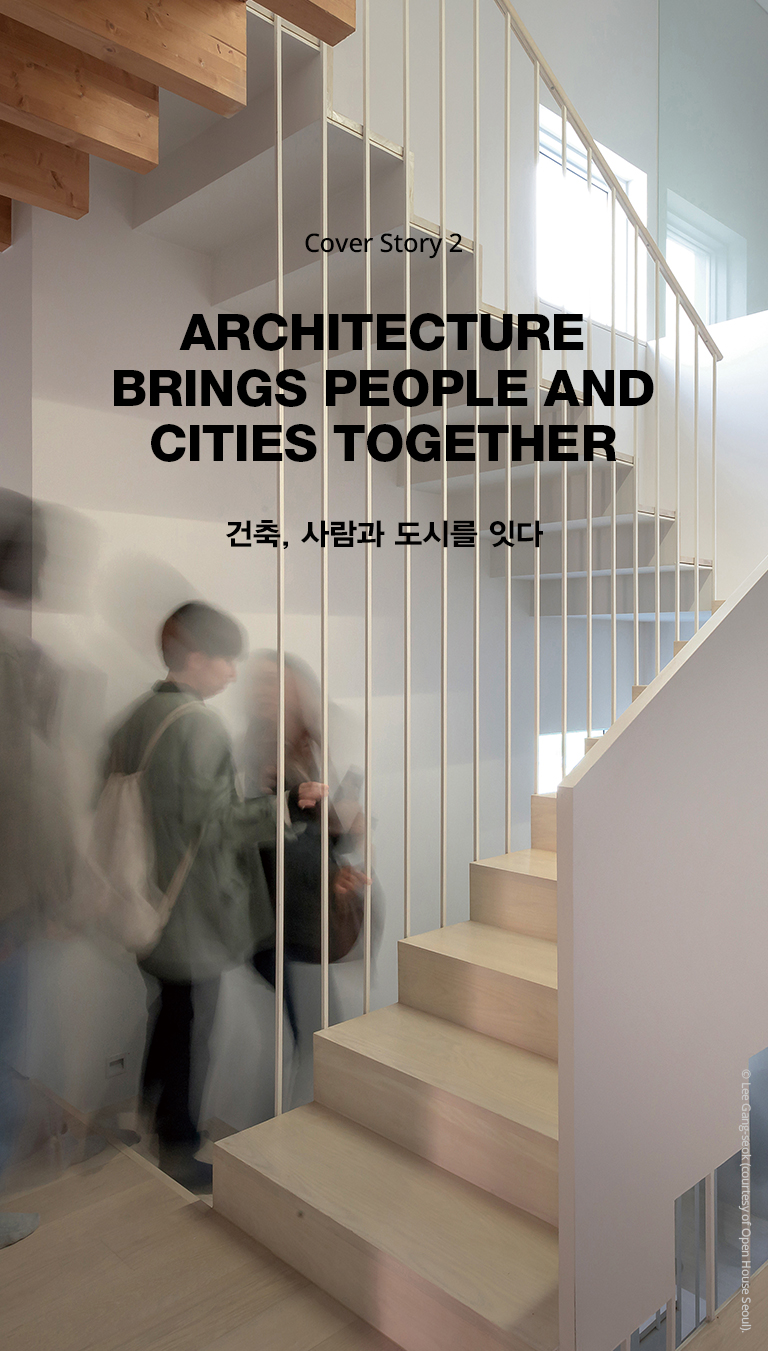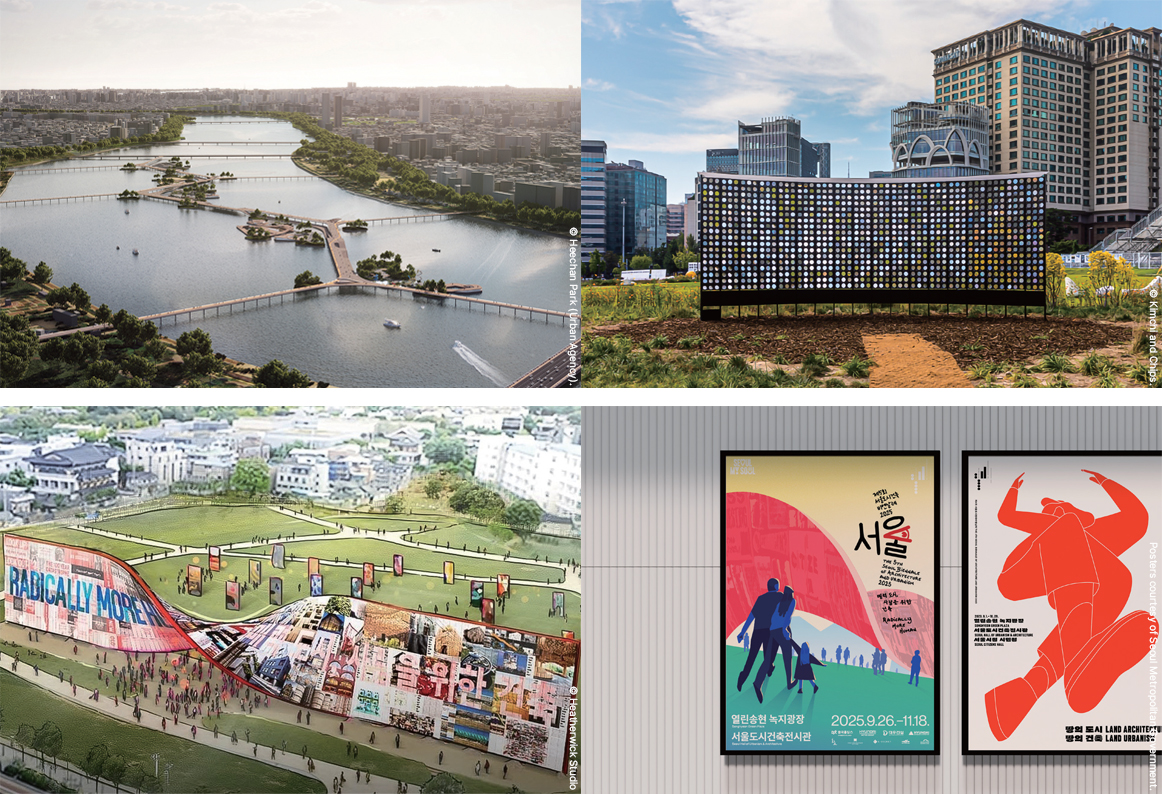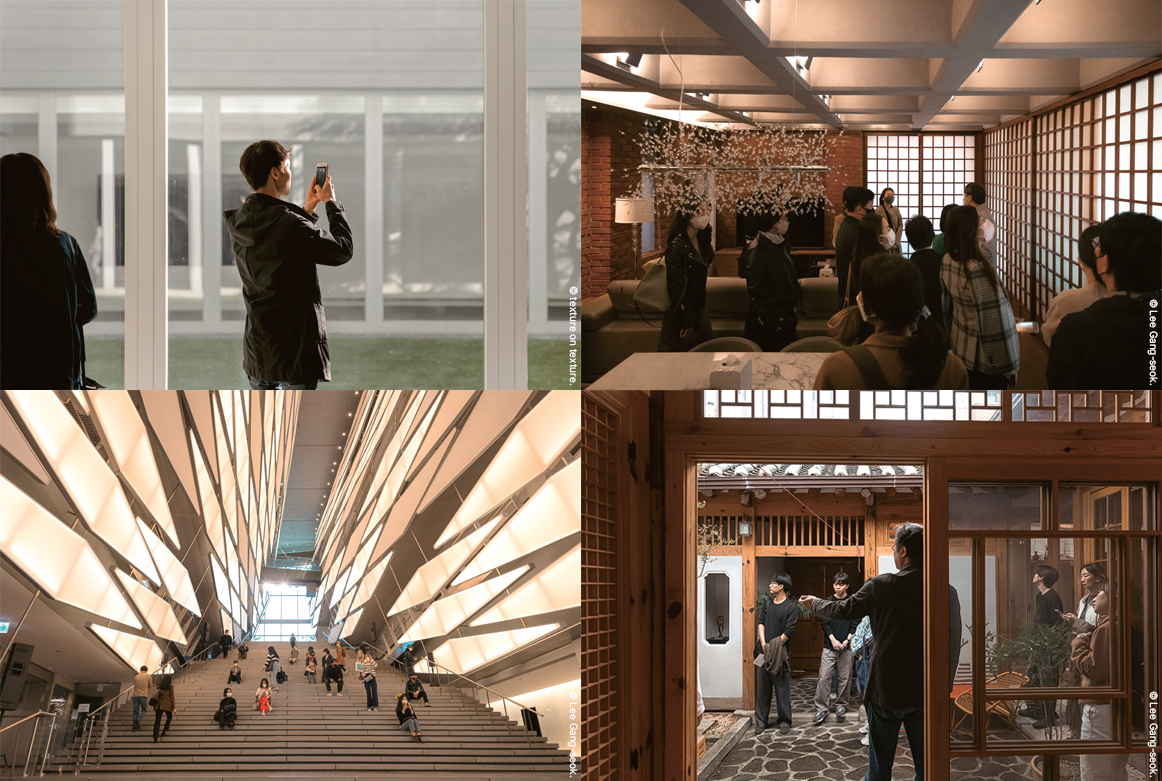
This fall, visitors to Seoul can explore the city and its architecture through a festival that looks beyond practical function to how buildings shape human experience. Ordinary places across the city reveal hidden stories, inviting everyone to see their surroundings—and themselves—anew.
매일 우리와 함께하는 건축물과 도시가 이번 가을 새롭게 다가온다. 단순한 기능적 공간이 아니라, 사람과 교감하는 존재로서 건축과 도시를 조명하는 축제가 열린다. 서울 곳곳에서 일상 속 비일상을 경험하며 삶을 한층 더 깊이 들여다볼 기회가 펼쳐진다.
Writer. Sung Ji Yeon
The Seoul Biennale of Architecture and Urbanism, held in the Korean capital this fall, is an international event that examines issues impacting various cities. This year’s biennale is being directed by English designer Thomas Heatherwick, who is known for his innovative work spanning the fields of architecture, design and urban spaces.
Running from Sept. 26 to Nov. 18, the 54-day biennale brings a festive mood to Songhyeon Green Plaza, near Gwanghwamun Gate; the Seoul Hall of Urbanism & Architecture, across from City Hall; and the surrounding area. Excitement is in the air as the biennale brings visitors an up-close-and-personal experience of the architecture that sustains our cities, as well as our living spaces. At the event, ordinary citizens can mingle with architects, academics and artists from every field.
Heatherwick’s theme for this year’s biennale is “Radically More Human.” The various programs and exhibits featured in the event pose the following question: What is our emotional relationship with buildings that goes beyond mere functionality and efficiency? Heatherwick also talks about the conditions necessary for structures to stay well-loved and encourages visitors to consider what can be done to make Seoul more enjoyable and appealing from an architectural perspective.
The biennale comprises four distinct exhibitions, each with its own unique focus. The Thematic Exhibition focuses on this year’s theme. The Cities Exhibition examines public projects from cities around the world. The Seoul Exhibition peers into the future of Seoul and treats it as a locus for debating major issues impacting global cities. The fourth and final exhibition, called Global Studios, seeks to link citizens across the globe.
Two projects in the Thematic Exhibition deserve our close attention. “Humanise Wall”—measuring 90 meters long and four stories high—is a massive installation designed with environmental responsibility in mind. The project, a collaboration between nine community creative teams from Seoul and creators from Korea and overseas, seeks to express how ordinary citizens view urban architecture. The wall encourages visitors to reflect on how buildings make them feel.
Another outdoor installation in the Thematic Exhibition is called “Walls of Public Life,” which was made not only by architects and designers, but also by ordinary people. The various participants have created walls intended to represent part of a building, imagining the kinds of exteriors that could engage us in our daily routines. The contributors include American chef Edward Lee, English fashion designer Stella McCartney, a craft collective from Burkina Faso and a design team from Hyundai Motor Group. Through this installation, visitors will experience everyday architecture being transformed into something more delightful and charming.
The biennale’s opening ceremony was followed by a forum bringing together around 400 global participants, including architects, urban planners and community organizers. The forum hosted a discussion about how cities can be made more human-oriented. The biennale also offers hands-on architectural activities for visitors, such as sketching the facades of their favorite structures or touring Seoul’s major sites. There were also lectures by psychologists, artists and historians focusing on the emotions aroused by viewing a building facade.
The exhibitions and programs held in downtown Seoul as part of the biennale are helping festivalgoers experience for themselves how architecture and design impact our everyday lives. For those seeking deeper insight into the events, as well as anybody curious about the history of the biennale, refer to Google Arts & Culture, an online service available via website and smartphone application. Details are also available on the biennale’s official website.

invisible until the structure is complete. It's difficult for laypeople to grasp the needs of clients and the philosophy of architects expressed in buildings. But once a year, ordinary people get a chance to hear the stories concealed in these buildings. The doors of architecture’s rich storehouse are flung open every fall during Open House Seoul.
This celebration of urban architecture enables visitors to explore Seoul’s cityscape and buildings. It’s a chance to get acquainted with the city and experience the artistic aspect of its spaces. Guided by architects and critics, visitors get a behind-the-scenes glimpse of normally inaccessible buildings, such as corporate headquarters, embassies and private residences. Visitors are invited to consider how architecture shapes our everyday lives while reflecting the city’s identity, which can be a source of artistic inspiration.
Held from Oct. 25 to Nov. 2, Open House Seoul 2025 offers plenty of reasons to visit. Each year, the festival showcases some of the country’s finest architects, with Ken Sungjin Min taking the spotlight this year. A program will be held exploring his work.
Open House Seoul will also highlight some of Seoul’s most renowned buildings, including the Daeyang Gallery and House by Steven Holl and In Hoh Lee, along with the embassies of France and Switzerland, the HD Hyundai Global R&D Center and the Kolon One & Only Tower. In short, the cream of the crop of Seoul’s architecture will be open to the public.
This year’s special program is also scintillating, addressing the theme of “The Uses of Old Spaces: Future Heritage in the Making.” The program will explore the legacy Seoul can leave through spaces that are vanishing or on the verge of being recycled or transformed. Buildings from the 1970s and 1980s—which have come to be appreciated for their classic charm—will be the subject of a discussion on architectural value and repurposing potential.
Last year’s program opened up a total of 145 spaces for visitors to explore to their great satisfaction. Everything was explained in terms that are easy to understand by laypeople, and visitors were encouraged to view the surrounding architectural landscape in greater detail and to appreciate the significance of architecture in their everyday lives. For those interested in or already studying architecture, the program can inspire new designs. It also shares problem-solving methods of famous architects, making it informative even for those with a background in the subject. Regardless of the level of one’s architectural knowledge, Open House Seoul offers visitors a fresh viewpoint from which to rediscover their surroundings and rekindle their affection for the city.
Given the high level of demand, most programs are offered through a lottery system, but some buildings can be visited without a reservation. The entire program will be posted online on Oct. 10 on Open House Seoul's official website. Participants will be selected through lotteries held for a designated period of time. Those interested are invited to watch for updates on the official website or Instagram page.
